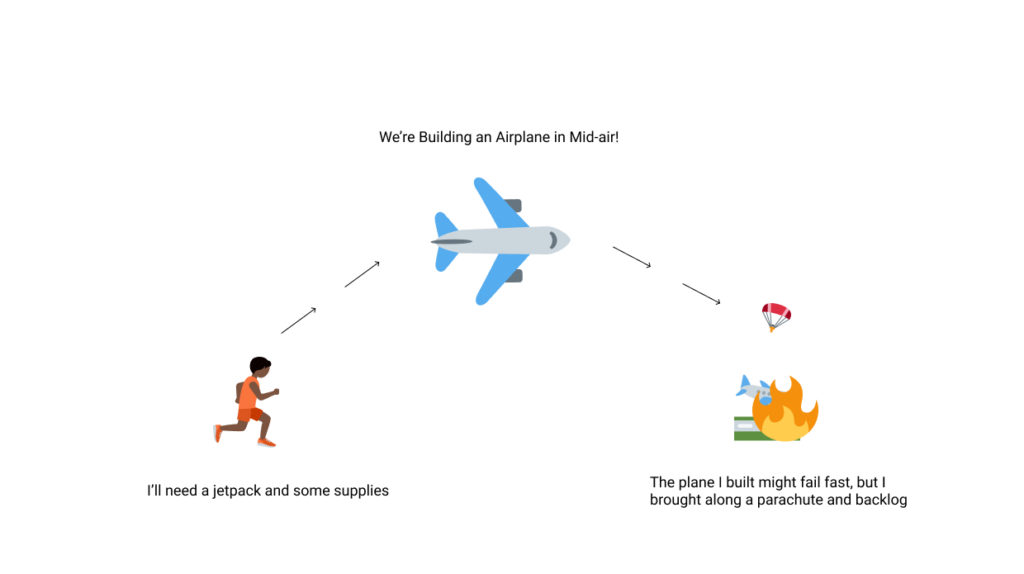Back when we still had offices in downtown buildings, a panicked freelancer pulled me aside and said, “you’re asking us to build a plane in mid-air. It’s just not possible.”
Good UX designers know the power of discovery and upfront research. They know that only through interviews, observations, and mining available data can they begin to understand what is needed to design an appropriate, useful experience.
The most successful projects start with a notion of the problem to solve. By following a rigorous discovery process, designers can generate new insights that might reveal the problem in a new light. These insights become the basis for a more revelatory problem statement and can inform an early-stage prototype with a better market fit than what otherwise would have been delivered.
The real world isn’t always so accommodating of the discovery phase.
Clients don’t want to pay for discovery. They want a designed concept yesterday. Agencies don’t want to slow down to conduct discovery at the risk of hurting their margins. It’s why agency job postings everywhere say, “must be willing to embrace ambiguity.”
That’s why I came up with the concept of JETS – Just Enough to Start. It’s a variation of the Speed to Real process I learned at my last job. In this case, JETS sets some parameters around what we must have before starting a project. It doesn’t necessarily ensure better outcomes than the complete, UX-led discovery process. But it does give us inputs to refer back to as design decisions inevitably get questioned deeper into a project. It includes a simple checklist that I find helpful:
- Do we know the target audience?
- Do we have an idea of their pain points or frustrations?
- Do we have a roughly formulated problem and vision statement of what we are trying to solve and where we want to end up?
- Do we have an understanding of technology, budget, timing, and staffing constraints?
- Do we have access to any available user or site data?
- Do we have a list of competitors or adjacent businesses that might inspire us?
- Do we have a basic understanding of the industry and the macroeconomic forces at play?

If we can answer “yes” to 90% of these questions, then I say rev up the imaginary engines, and let’s get started. We aren’t guaranteed success in light of these UX shortcuts, but we’ve got a chance to land the plane that we’re building in the air. Or at least the opportunity to learn something after we’ve crashed and burned.
